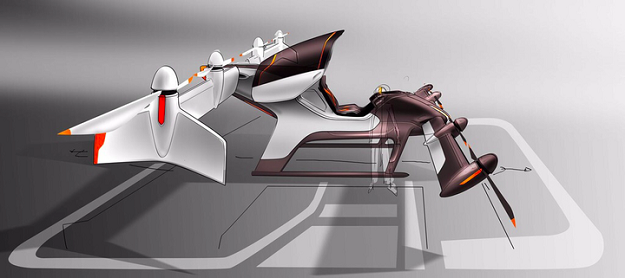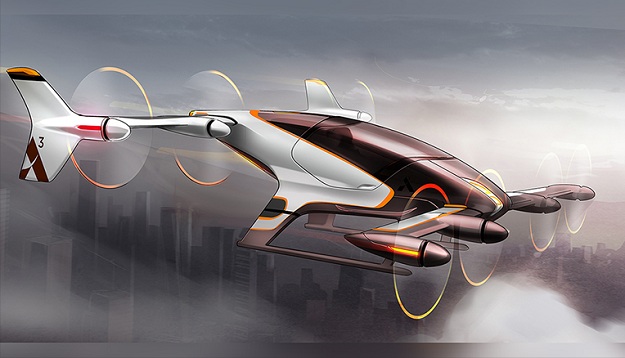Devil Soul
ELITE MEMBER

- Joined
- Jun 28, 2010
- Messages
- 22,931
- Reaction score
- 45
- Country
- Location
Airbus unveils flying taxi
By Tech Desk
Published: October 22, 2016
4SHARES
SHARE TWEET

The autonomous aircrafts would provide Uber-like services in the future. PHOTO: VAHANA
European aerospace giant Airbus has quietly unveiled details of its secret Silicon Valley project on pilot-less aircraft.
Dubbed Vahana, the project aims to provide a flying alternative to daily commute in the form of autonomous aircraft which could provide Uber-like services in the near future.
Airbus revealed details of the Vahana project in a blog showing images of a futuristic aircraft capable of vertical takeoff and landing. It is powered by four electric motors on each wing.
Airbus presents 3D-printed mini aircraft
The aerospace giant is well known for its large jetliners the most recent being the double decker A380. However, Airbus is now investing heavily in startups and also has a dedicated Silicon Valley based advance projects wing called the ‘A cubed’.

PHOTO: VAHANA
“The aircraft we’re building doesn’t need a runway, is self-piloted, and can automatically detect and avoid obstacles and other aircraft,” A3 chief executive Rodin Lyasoff wrote in September. “Designed to carry a single passenger or cargo, we’re aiming to make it the first certified passenger aircraft without a pilot.”
The Vahana project aims to come up with a prototype by as early as 2017 and could enter production by 2020. However, Airbus is not the only manufacturer in the fast growing aviation field with car manufacturers Toyota and Honda also making inroads. Honda delivered its first private jet in 2015.

PHOTO: VAHANA
Dubai’s Emirates orders two more Airbus A380s
Airbus also announced last year that it would collaborate with Uber in a business venture for helicopter operators. However, the flying taxi project has a long way to go. Airbus says it will employ “sense and avoid” technology to avoid midair collisions and use ballistic parachutes in case the aircraft’s engines malfunction.
By Tech Desk
Published: October 22, 2016
4SHARES
SHARE TWEET

The autonomous aircrafts would provide Uber-like services in the future. PHOTO: VAHANA
European aerospace giant Airbus has quietly unveiled details of its secret Silicon Valley project on pilot-less aircraft.
Dubbed Vahana, the project aims to provide a flying alternative to daily commute in the form of autonomous aircraft which could provide Uber-like services in the near future.
Airbus revealed details of the Vahana project in a blog showing images of a futuristic aircraft capable of vertical takeoff and landing. It is powered by four electric motors on each wing.
Airbus presents 3D-printed mini aircraft
The aerospace giant is well known for its large jetliners the most recent being the double decker A380. However, Airbus is now investing heavily in startups and also has a dedicated Silicon Valley based advance projects wing called the ‘A cubed’.

PHOTO: VAHANA
“The aircraft we’re building doesn’t need a runway, is self-piloted, and can automatically detect and avoid obstacles and other aircraft,” A3 chief executive Rodin Lyasoff wrote in September. “Designed to carry a single passenger or cargo, we’re aiming to make it the first certified passenger aircraft without a pilot.”
The Vahana project aims to come up with a prototype by as early as 2017 and could enter production by 2020. However, Airbus is not the only manufacturer in the fast growing aviation field with car manufacturers Toyota and Honda also making inroads. Honda delivered its first private jet in 2015.

PHOTO: VAHANA
Dubai’s Emirates orders two more Airbus A380s
Airbus also announced last year that it would collaborate with Uber in a business venture for helicopter operators. However, the flying taxi project has a long way to go. Airbus says it will employ “sense and avoid” technology to avoid midair collisions and use ballistic parachutes in case the aircraft’s engines malfunction.

